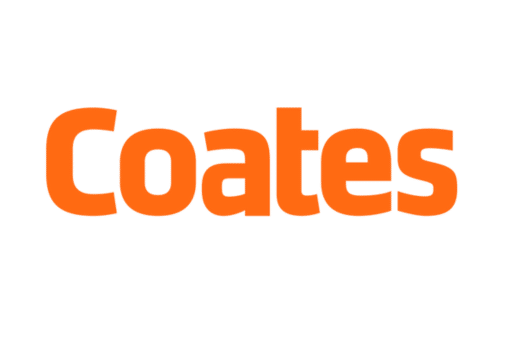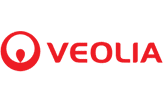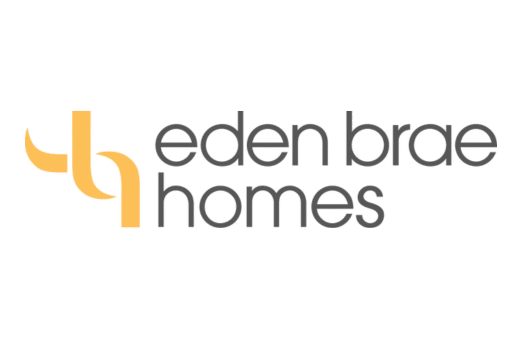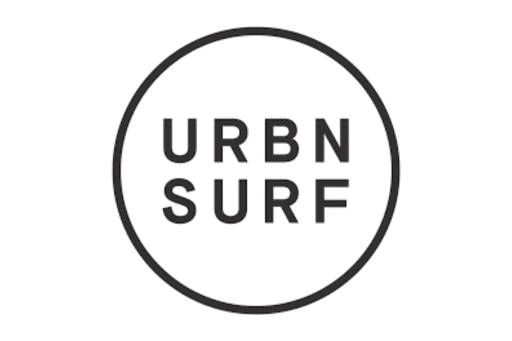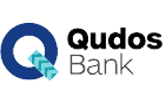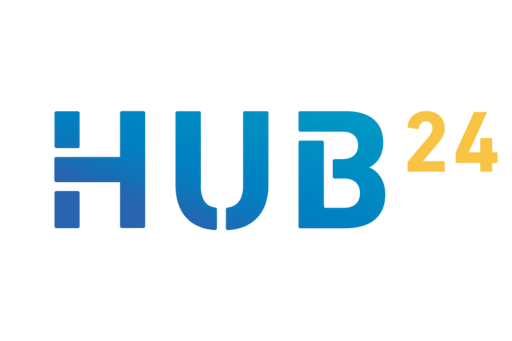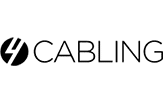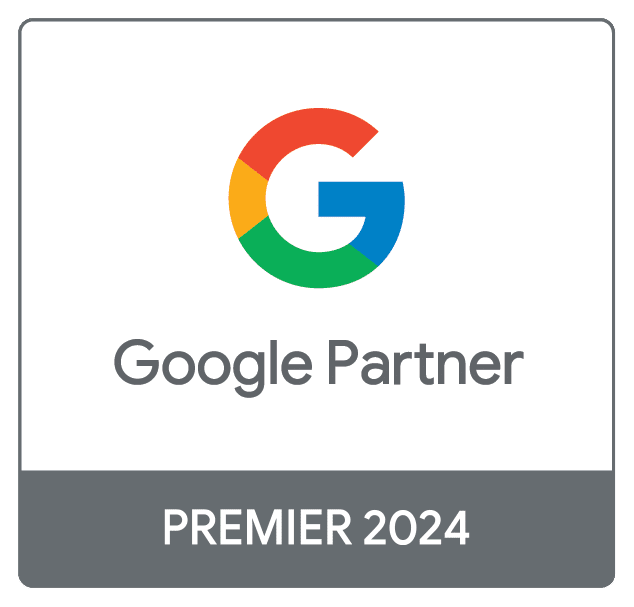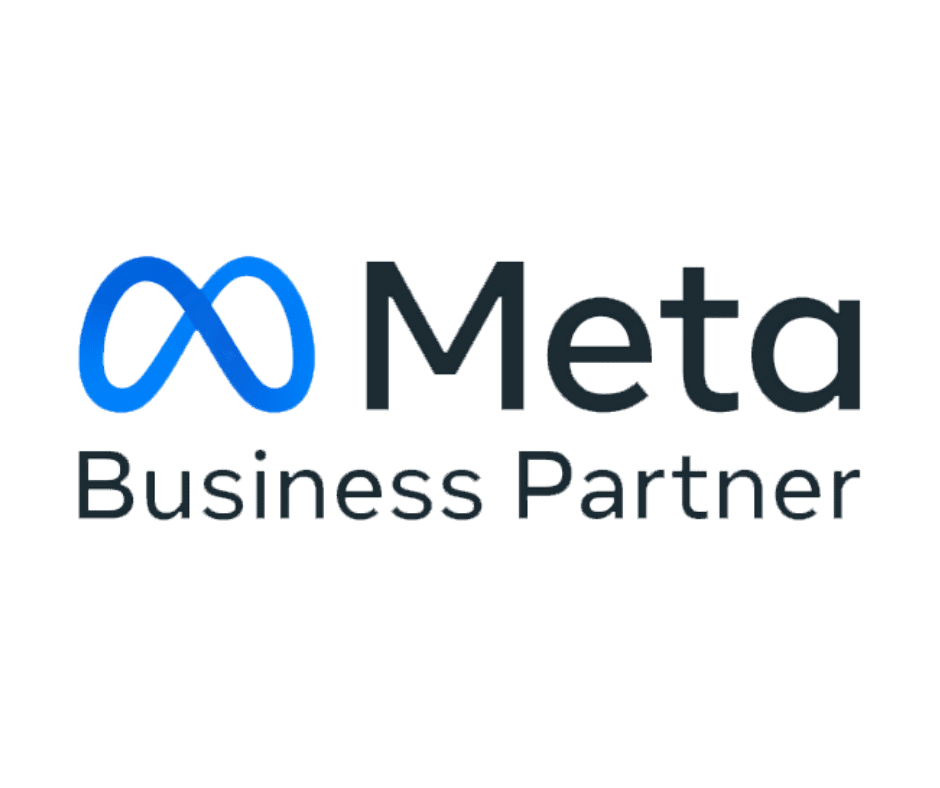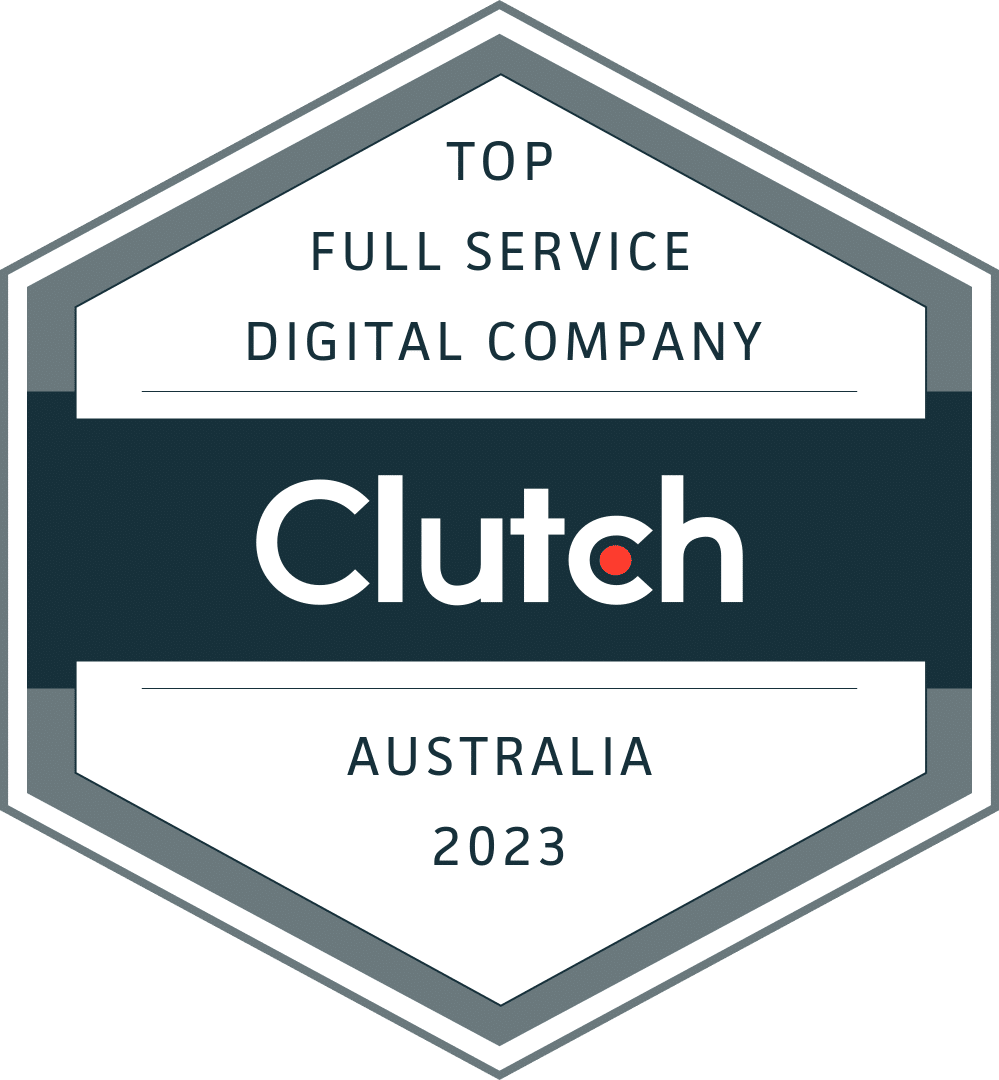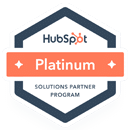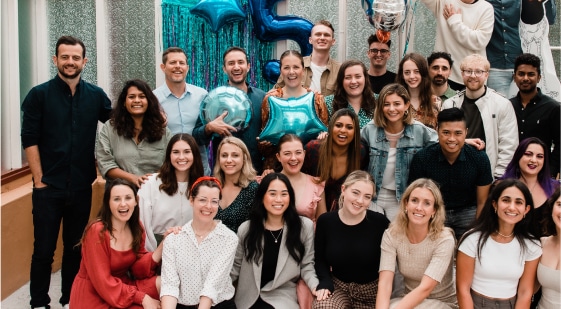Maximising E-commerce Sales in 2023 w. Iain Calvert
Episode Description:
As an e-commerce business, your goal is always to make more sales. Leading Australian e-commerce authority Iain Calvert shares simple, practical tips that will help you run successful multi-channel campaigns and drive sales for your business in 2023.
Key Takeaways:
- The challenge isn’t just getting the sales, it's promoting consistent growth.
- The dangers in single-channel marketing.
- The value in running conversion ads with detailed audiences to generate sales.
- “Money going in, money coming out” mindset.
- Attribution is a fancy word for “guess”.
- Budgeting for brand building vs generating sales.
Featuring:

Iain Calvert
About the Guest:
Iain (aka “ian”, that double “I” throws a lot of people) is an Australian based eCommerce consultant and trainer that has worked with the likes of Billabong, Vogue, Quiksilver and 100’s others under NDAs. He applies what he learned working for big eCommerce businesses to help independent Aussies businesses sell online. Originally growing up in the UK he started in eCommerce in 2003. He moved to Brisbane in 2011 to join, and eventually end up running, one of the largest independent digital and eCommerce marketing agencies in Australia. He now lives in Melbourne, where he works as an Ecommerce Consultant for a select handful of Aussie brands helping them sell successfully online.
Iain’s definition of eCommerce success is having more money in the bank at the end of the month, rather than ridiculous headline-grabbing quotes like “XYZ now worth $100m”. After working with and seeing the inside of these fast-growing companies he came to learn they aren’t all they seem. He believes that popular doesn’t mean profitable and applies this to eCommerce. Due to restricting the no. of clients in his eCommerce consulting practice, and repeatedly being asked to help other Aussie eCommerce businesses, he setup up Boom - Aussie Ecommerce Training to document what he knows and share it with fellow Aussies or anyone with an interest in selling in Australia. You can follow him on LinkedIn.
Podcast Summary: How to Maximise eCommerce Sales in 2023
ECommerce consultant Iain Calvert reveals simple, practical tips that will help you run successful multi-channel marketing campaigns and drive sales for your business on the Smarter Marketer podast.
If you’re an eCommerce business, your main challenge isn’t just generating sales in a given month, it’s promoting consistent revenue growth. And with multiple channels promising success, it can be overwhelming to decide what marketing activities will work best for your business.
The most effective way to run a successful eCommerce business is understanding what lever to pull… and you’re not going to know which channels will generate a good result until you test them!
The brands that have a good understanding of which levers work best for their business are the ones that are more successful.
What is working in eCommerce at the moment?
Running PMax Campaigns
Circa November 2021, Google Ads launched Performance Max(PMax) campaigns as the new ad type - previously smart shopping campaigns. PMax campaigns aim to drive more qualified traffic and to your website in order to convert more users into purchasing your product.
The important thing to remember is that pMAx campaigns take information directly from your product feed. When it comes to selling your products via Google Shopping ads, make sure you’ve got these three things right:
- Good photography
- Unique and detailed product descriptions
- Solid reviews of good products
Tip: Consider running ads in Google’s Discover Feed. This is a feed of articles and products that are related to consumers’ interests and previous searches. Running paid ads here is a great opportunity for your eCommerce business to drive engagement with products and build brand awareness - especially on mobile.
Running Facebook Ads
Facebook Ads are a cost-effective way to not only reach a large audience, but through segmentation and targeting, they are a great channel to reach your ideal consumer. The multiple ad formats and call-to-action options can drive consumer engagement with your brand, and most importantly, drive revenue.
Tip: Conversion ads perform best for eCommerce almost every single time. When you run conversion ads, you’re telling Facebook that you want sales, and then you’re using detailed audiences and interest audiences to generate those results.
Implementing Email Marketing
If you don’t have a solid long-term email marketing strategy in place, start with basic email flows.
These include the likes of:
- A welcome email, potentially with a discount code, talking about your brand and products to those who subscribe to your database.
- An abandoned cart series for those who don’t finish purchasing a product after starting the purchase journey.
Tip: You should be aim for an email open rate of at least 20%. If you’re consistently seeing less than this, you need to segment your audience further and review your subject lines.
How to build a long term plan for your eCommerce business?
It can be difficult to find a balance between brand building vs sales activation. A good guide is splitting your marketing budget to 80% on performance and 20% on branding.
Your brand-building activities shouldn’t focus on the return on effort - it’s entirely about pushing the brand message. What is the core essence of your brand about? What differentiates you from your competitors? Put 20% of your ad budget behind this message and make sure it’s reaching the right audience.
At the end of the day, in most cases, the difference between a good eCommerce brand and a bad one, is the brand itself!
When is the best time to go on sale?
Most eCommerce businesses go on sale when their competitors go on sale - this isn’t always wise. The best time to discount your products is when you need to meet certain numbers, and you have an excess amount of stock. You should also being launching a sale during key times such as Black Friday and Boxing Day.
How much of your revenue should you be spending on advertising?
This entirely depends on your brand and what products you sell.
First, you need to work out your gross margin - the money left over as a percentage after you’ve paid for your product, and any other costs that will go up/down the more you sell the product (eg. afterpay, freight from your manufacturer to your warehouse, etc.).
If you’re sitting in the marketing department of an eCommerce business, you need to have an understanding of stock, industry and pricing.
There’s a really good, basic formula for an eCommerce business to work out your marketing budget. With the revenue coming in:
- Take off 10% for GST.
- Typically, 50% would be your gross margin - this is how much money is left over.
- To run your business, you need around 30% for operating expenses (rent, salary and advertising)
- This leaves you around 20% net profit.
If you’re spending 30% of your revenue on advertising, then that’s going to take away from your net profit.
Attribution is a fancy word for guess!
Forget about all of these fluff metrics. In reality, attribution is just a fancy work for guess. You want to be measuring money in - money out.
“How much money did we spend on advertising, and what revenue did we generation during that period of time?”
It doesn’t matter how many pins you got on Pinterest, or how many likes on your latest TikTok if it’s not converting into sales.
To succeed as a marketer in an eCommerce business, you need to think like a salesperson. This means understanding each step in the sales funnel, the key pain points your customers are facing, and how to position your product to best meet their needs.
If you’re an eCommerce business looking to grow sales this year, Rocket can help. Reach us on 1300 059 620 or contact us here.
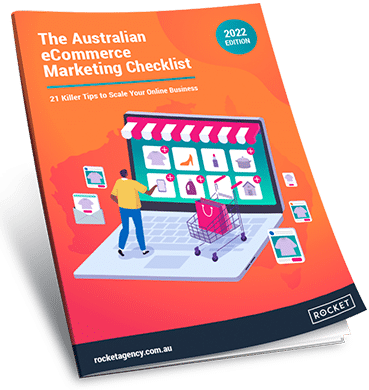
The Australian eCommerce Marketing Checklist
19 Killer Tips to Scale Your Online Business
Transcript
James Lawrence: Ian, welcome to the pod.
Iain Calvert: Pleasure to be here.
James Lawrence: Excellent mate. So Ian grew up in the UK and started his eCommerce journey in 2003. He moved to Brisbane in 2011 to join and eventually end up running one of Australia's largest independent eCommerce agencies, which Ian, I think we met at a Google Partner day many years ago.
Iain Calvert: We did indeed. It was great, wasn't it? They brought all these competing agencies together, independent. We all sat there going, all right, this is our competition. But they did it really well because, I mean, the amount of people that I'll stay in touch with and that has been amazing. Everybody was just remember they said, don't share specifics, just talk general. So much value out of that. And then ask, how would you
James Lawrence: They brought all these competing agencies together, independent. We all sat there going, all right, this is our competition. But they did it really well because, I mean, the amount of people that I stay in touch with has been amazing. I just remember they said, don't share specifics, just talk general. So much value out of that. And then ask, how would you do this? By the end of the first morning, we're all sharing all of our inside trade tips and it's a small industry, isn't it?
Iain Calvert: Yeah, it's you know, everybody tends to get to know one another. People move from businesses to businesses, etcetera.
James Lawrence: That's it. I think probably opened my eyes up to you stand to gain a lot more by being open and sharing being one of the fundamental lessons that I learnt there.
Iain Calvert: Yeah, absolutely. I'm always open to chat to anybody, but I'll tell anybody anything that I know.
James Lawrence: Hence why we've got you on the pod.
Iain Calvert: Yeah, yeah. The information just falls out of my mouth. That's it.
James Lawrence: But yeah, in 2018, you took the leap to basically venture out on your own to become an independent eCommerce consultant. Over the years, you've worked with the likes of Billabong, Vogue, Quiksilver, and hundreds of others, which are mostly under NDA. You're currently an eCommerce advisory board member at Submarine by Disco Labs. You're also an advisory board member for UK. So, Ian, when I thought of eCommerce, I thought of you and I thought the listeners to the pod, if they're working in an eCommerce environment, they're probably kind of looking at one business and one set of data and analytics and kind of one problem to solve. It's so valuable to hear from people that are looking at lots and lots of problems and lots of challenges and lots of businesses. And so I think so good to get you on to the pod. We're kind of getting close to 2023 now and just be a big picture. Trends, techniques, technologies, what you're seeing working in eCom, what the state of play is in Australia? So yeah, thanks. Thanks for spending some time with us.
Iain Calvert: Absolutely. My pleasure.
James Lawrence: Good stuff. So I think probably after that introduction, listeners have a good idea of your journey, but just yeah, I guess good to just what are you working on at the moment? Types of clients, types of work.
Iain Calvert: So what I do is it's just me. And so I work hands on literally with a handful of businesses. So I'm doing all the ads for them across multiple channels, helping them manage the business. Essentially my whole thing is getting them to be cashflow positive. So it's managing the big costs, which in the eCommerce business are basically stock and advertising. Just before this, I was just setting up some ads within Facebook. It's been a really interesting couple of years because obviously Covid, everybody's absolutely sort of like crapping themselves. I remember sitting down with one client and we were doing essentially recession planning of what costs would cut and all these bits and pieces. And then two weeks later, so literally just sort of take off every day, turn their ad spend down. So all the CPMs came down, all those bits and pieces. And then because I'm really close with the account, sort of saw that all the conversion rates are starting to go up and the CPMs were coming down. Let's, let's go. And just March 23rd, I think was the day 2020. It just took off great. Obviously a lot of other people sort of like experienced that.
Iain Calvert: A couple of interesting things that I did with clients was that a lot of the time the challenge isn't getting the sales, it's actually keeping up with the sales and keeping things growing consistently. Because it's not a SaaS business where you can just sell usernames and passwords. You've got to keep up with that sort of stock. So what I did with a lot of the businesses is we gradually increased it and we made sure we stayed in stock, which is now paying massive dividends, because what has then happened in Australia around, I'd probably say like March or April, people started having a really, really tough time because the online sales started to come back. Everybody had real difficulty getting stock because the supply chain issues with like freight forwarding or the container costs, etcetera, they couldn't get stuff, so they just went stuff it, let's order loads because things are going like this. Everyone ordered loads of stock. Less people started buying online because they wanted to get out. They wanted to book their European holiday where they could go lose their luggage. All those bits and pieces and and people were buying less online. So then what everybody did was they then started discounting, which made it even harder. And people have gone through a really, really tough time.
Iain Calvert: I see a lot of people jumping around, agencies going, oh, you know, you're not getting us the results, etcetera. It's like, well, eCommerce, like any business, isn't just the marketing. It's a combination of all these different sort of factors. It's really interesting seeing Australian businesses say compared to like UK ones. There's a lot of UK businesses that are really struggling. It's tough. Like I mean really, really tough. Doesn't matter what you do type of thing. I own an eCommerce business myself and it was like first couple of weeks was a bit long. I was on holiday, trying not to do anything but keeping an eye on it. I think it's going to be really interesting, like October, November, December. Black Friday seems to be bigger than like the previous one. So we'll see how we go out on top of all of that. Well, the iOS 14 fun stuff. So I think we all know those businesses that were just relying on Facebook ads and that's so dangerous, so, so dangerous. I'm not saying it's in hindsight. I'm just saying this, as you would know, being in the industry for ages, but I reckon it's about every five years there's this major upheaval. I remember when Google removed keyword data it’s like, oh my God. I strongly believe that it's having a good diversification of all the different channels, because there's going to be a problem at one point. If you're solely reliant on one, then you can kind of take a nosedive.
James Lawrence: And even if it's less macro and it's more just something happens to you within that channel, right?
Iain Calvert: I mean, we've all had Facebook accounts disabled for whatever reason, right? Because the wind's blowing in the wrong direction. Or you might have an issue with Google Shopping because the delivery information doesn't match up on the landing page. Because there's a technical sort of like issue. And you might lose that for like a couple weeks if you're reliant just on one channel, that's dangerous. I remember friend back in the UK worked for this business. 80% of their traffic and sales was coming from SEO. And they're like, this is great. We're not paying for anything. And they said a little bit too close to the wind. I don't know exactly what they did, but they got a penalty. Tanked. Business wasn't moral. They didn't have loads of cash like six weeks. They were done.
James Lawrence: Yeah. That's it. Yeah. Definitely not what you want to be doing. Putting all your eggs in one basket.
Iain Calvert: Oh my God, no absolutely not. That's bad times. That's like having an investment portfolio of one stock. Imagine you're just all in one.
James Lawrence: Exactly. What are you seeing in terms of verticals like, UK really struggling economic wise, in Australia probably validates what we've been seeing as well in terms of Covid. Everyone freaked out, but actually it turned out to be the biggest boom for eCommerce generally across most verticals we've ever seen. But then things have slowed down, probably because they kind of had to see this unnatural spike. Things are going to kind of come back to a norm, but also obviously there's strange economic times around the world. So are you seeing certain verticals or categories still doing really well and others struggling, or is that kind of across the board?
Iain Calvert: No. It's weird. The pattern I've spot is more country based. I know there are some Australian brands that are really struggling. Fashion brands tend to only do well if they're on sale, which is like a vicious circle, sort of like to get into. And I think to be honest, everything comes down to your product. If you've got a really good product that people want, that is fundamentally what's going to work, right? I think we had the massive boom in Covid because people could only order that product online. Then seeing it come off, because people want to go and buy that, sort of elsewhere. So as much as I'd love to kind of give you an answer on the individual, sort of like industries: No, it's honestly more the setup of the business is the thing.
Iain Calvert: The way to run an eCommerce business is understanding what levers to pull. So imagine you've got like 100 levers and then ten of those levers are going to control that business. You don't know what those levers are until you start pulling them. So an example of pulling a lever is go, okay, do Pinterest ads when we run them, will they generate X amount generate more sales within the month? Let's pull that lever again. That doesn't do anything right. Let's do some email marketing. That kind of like works. And the businesses that have got control on each of these levers that go, okay, cool. We know this is happening. So let's do this. Another example would be, I think most eCommerce businesses go on sale when everybody else goes on sale, like there's an Easter sale or there's Black Friday or what have you. Whereas the the best way to run an eCommerce retail business is to go on sale when you haven't hit your numbers and you've got too much stock because you want to turn that stock into cash, whereas if you constantly discounting, then that doesn't work. That's a really good lever, sort of like to pull. So the ones that I work with hands on, we've kind of got those levers and we go, okay, this has happened, we need to do this. This has happened, we need to do this. But, I mean, I only work with a handful, so I'm really embedded with those.
James Lawrence: That's good. Just kind of just curious, I take your point that it's a reasonably small sample compared to industry data that we can kind of grab in terms of, the bulk of the listeners to the pod in-house, Australian marketers interested in eCommerce or overseeing a business where eCommerce is an important part of what they're doing, from what you're seeing and what you have seen over the years, what is working in eCommerce at the moment? Because I think it's sometimes hard when you are siloed in-house and you're working on one business. That's kind of why the agency model exists, right? Because you can use an agency to look at their insights and experience from a broad basket of clients. So what what works? And give us the the secret sauce.
Iain Calvert: It's actually really simple. Everybody tries to overcomplicate it. In marketing, we kind of got sold this funnel and we sell that funnel sort of like onwards. Remember when I just started focusing on doing eCommerce, these are ads running sort of for engagement. And then we've got a mid funnel here. We've got all these sort of bits and pieces etcetera. Never seem to really work well but this should work. And what I noticed was, particularly for eCommerce, let's say on Facebook - this is pre iOS 14 and post 14 - essentially you just run conversion ads. So we're telling Facebook this is what we want. We want sales. We don't want people to click on the link or any of this nonsense. This is exactly what we want. And then using detailed audiences or interest audiences. So let's say if you’re selling keyboards because there's one in front of me, people interested in keyboards, if there's an audience that big, that's probably a terrible example at top of funnel or sort of like code audiences. And as long as you've got a pretty chunky size. So ideally Australia, it's sort of like 400,000 people plus the actual audience. Overseas it tends to be a bit smaller, bigger, but you want a good kind of like mix of those.
Iain Calvert: Those things just perform amazingly well. Every single time. And I always go into any new account or business, and if they've normally got some weird engagement, traffic. So I watch them and then I'll launch these detailed audiences campaigns, top of funnel, and they just crush it every, every single time. The remarketing ones really, really struggle. I think that is very much like a post iOS 14 thing, because Facebook doesn't have that kind of like data. So you don't need to bother with all of these other different ones. I hate these arguments where people say, oh yeah, but traffic campaigns are sort of cheaper or move up the funnel if it's sort of not working. Facebook account manager is like, oh yeah, try doing this right. And when you zoom out and you look at the results, they’re always worse. And I'm measuring money in, money out. I'm not going on what Meta or Facebook ads manager is reporting to me that is attribution, also known as a guess.
James Lawrence: So you're comfortable that Facebook reporting isn't accurate for what you need?
Iain Calvert: Oh my god, yeah it's comical. So this is the way I explain it. I say imagine it's like a lying toddler. It's kind of got a good-ish intention, but really it's a general direction. Unless the results are so, so good. That's when you know that something's really going well. It's an indication what matters in eCommerce is money and money out. How much money did we spend on advertising? What revenue did we get in over a given period of time? Now, depending on how much volume of traffic you get depends on that period of time, I would normally suggest a minimum of a month. So you see the money coming in, the money coming out. How's that doing year on year? What are the factors that could then affect that? Obviously Covid etcetera and stuff like that. It will become really, really, really clear. I mean all you got to do is just look at something like Facebook Ads Manager and that little two that sort of like comes up goes, this is modeled okay. Attribution is just a fancy word for guess. And the reason that they do that is because most marketing managers are looking for, well, we spent this, what did we get? And we all know that just simply doesn't work that way. Maybe for a few impulse buy products, but there's no way you just do one search that happens. They're trying to go, this is the money you've put in this and the money that you've got out. Well, actually add together all those channels and you're not going to get like 100% of the revenue. You're going to get like 250%.
James Lawrence: Yeah. That's it.
Iain Calvert: I have this theory, because this is the thing I was trying to work this out for years. I remember when I was leaving the UK, so it would have been like 2011, and Google Analytics was coming up with, oh, we can do like multichannel attribution. Got really excited because, you know, you could see where everything was coming from. That didn't really eventuate. And so then it was about four years back, I started looking at all these reports and I was like, this doesn't make sense. And to me, when something doesn't add up, that's when the problem is. So all I do is I just zoom out to what we can trust, which is money in, money out. And then you go, okay, cool. So we increased our advertising on Meta for the last month. And we've had a significant increase in sales. There's been no other kind of like major sort of like events. So there's a high chance that it was that. So we can probably keep sort of like turning that up. And then what you do is you try and go down into a little bit more detail until things start getting fuzzy. And essentially you just simplify it. And this is what works for the brands that I then work with. Actually you're turning out spend up. Are you turning it down? If you're getting a bad return, start turning it down. Save your cash until things start going really, really well. Then you turn it up and give it.
James Lawrence: And then how do you? You're having to be pretty judicious with introducing variations. You're not going to drop in three new channels in a month because you won't know which of those three are working?
Iain Calvert: So I had a couple of experiences in my career, probably when I started, which is always longer than I like to declare. And it purely by accident. Working for Billabong, we were selling £20 Billabong t shirts, and Google Ads manager was reporting that it was costing £15 per sale. And this is at the time where I just thought everything's a line item. Money in money out. And I was doing SEO for the business at the time, was doing all the marketing. It was getting bigger and bigger and growing. So we got an agency in to take it off my hands. However, the cost for that agency was quite a bit. But we said, well, let's just turn off the ads because this isn't working. We're selling a t shirt, a £20 t shirt. It's costing us £15. The profit that we make on that, never mind. Everything else does not cover it. Let's turn it off. Within two weeks, everything tanked. We were committed, I think, for about three months to this agency or maybe maybe six months. And it showed me the relationship between the different channels. And we all see it.
Iain Calvert: If you spend more on Google Ads, then you have more direct traffic. When you send out big EDM campaigns, you see an increase in direct traffic. They all kind of work together, and that is the only way I have found that you can trust what works. So what you do is instead of going like, hey, let's run a trial for a week, we go, okay, this month we are going to go, let's say hard on Pinterest. We're going to spend ten grand on Pinterest. Are we getting an increase in sales? Are we making more? I don't care about their attribution, their 30, 30, 30 window by default, which always makes me chuckle. I know you can change it, but that's a big stretch, isn't it? You've had this many pins or this. It's like okay, but did we make more sales? We're an eCommerce business. We're making more sales. That's what counts, right? That is fundamentally what a business owner and the person signing the checks for either your salary or to pay the agency cares about. So that's what you then have to get to. So you wouldn't introduce three new channels. You go right, let's do this one. And then you do the short test and you know if it works or not. Again it's pulling this lever. Let's pull this Pinterest lever. Does that work? That is doing nothing. Okay, cool. We can leave that alone. But we're doing email that.
James Lawrence: Because eCommerce is dollar in dollar out. And you know we're on the business and making sales. How do you reconcile that with brand building and legitimate efforts online to build new eCommerce businesses in longer term brand play?
Iain Calvert: What I do is I normally split a budget on if they're brand building. This is 100% of our budget. We normally go 80% on the performance and 20% on the brand. We don't care about the return that we are getting. It is purely are we pushing a really good brand message? And again, it has to be a great brand message that's worth pushing if you're selling like screws and there's no thought behind the brand, then don't be running campaigns on like Facebook. And a really interesting case study with one of the brands that I work with, they had gone way too hard on the performance stuff. We have this amazing brand. It's incredible. I can't tell you who it is. But they realised after I went in and started talking to them, I think you just need to get back to what you're really, really good at and you need to be your voice. You don't need this massive team to produce X amount of ads. We don't need to be doing a social post every single day. Get back to the core of what your brand is about. And let's put 20% of the ad budget behind it to promote it and make sure that it's getting to the right people. Because I fundamentally believe the difference between a good eCommerce brand and a bad one is the brand that becomes your defensible moat. You have to be unique in your approach to it, rather than just selling widgets. You look at some of the businesses that do incredibly well that you can think of. They mean something to you. So that's where you boil it down to them.
James Lawrence: It’s that 80/20 split. That's good. Now guess that's a starting point right. And there's probably businesses that don't need to spend the 20 as much to that level. There's probably ones that should be spending 30. And a lot of the work that we're doing kind of lead generation longer buy cycle not buying online. You often look at a 50/50 split or even 60 to brand, 40 to performance, just depending on which makes sense right?
Iain Calvert: If it's a longer buying cycle, but with mostly common transactions, it's going to happen within 30 days.
James Lawrence: Yeah. I'm glad you kind of outlined that distinction because I think that makes sense. What else? I think you've talked there about Facebook challenges, that approach that does work, the challenges of iOS 14, but other channels, other techniques, things that you're seeing?
Iain Calvert: Within Google Ads, I'm a massive fan of Pmax campaigns and previously smart shopping campaigns. So Pmax have obviously taken over from smart shopping campaigns. I used to use Google Ads when it was Google AdWords.
James Lawrence: Me too. We won't tell anyone.
Iain Calvert: So text ads, right. Every time in eCommerce businesses, when I try the search ads or take over an account, I'll let them sort of like run, but they just underperform the shopping campaign. Shopping campaigns are great, and it just becomes about formatting or getting the feed right. I'm not going to do best practice and apply what has worked for all these other businesses. I'm going to look at what's working. Try pulling different levers every time I pull that search campaign. And they're a pain in the ass to maintain. Whereas if you've got a big catalog of products, let's say anything over 200 products, 300 products, the smart shopping campaigns work really, really well. If you want to really control what your ads are being shown for. If you're very protective, don't advertise on your brand and you just go for the regular shopping campaigns because you can exclude a lot of bits and pieces, I've also seen this is for a client that sells in the US, the discovery ads.
James Lawrence: Lets maybe unpack that.
Iain Calvert: So there's this amazing feature within Google. If you get the Google app, you've got the search bar at the top. And then underneath there's a feed of articles that are related to things that you've searched for that you're interested in. So I kind of got on to it because I sort of wanted to get off the old Facebook, sort of like scrolling, but wanted something kind of interesting. And it's amazing the articles there on it. So anything that you've searched for comes up that is related to it. You wouldn't necessarily search for it. So anticipating things that you would then want, you can run ads within here. And they just went absolute gangbusters. It was it was like Facebook ads before, it was I was like, oh my god, this is amazing. And then started trying doing in Australia and it didn't work.
James Lawrence: That's just because there's not the penetration of that app.
Iain Calvert: I think that's what it is. It's tried them in the UK. They kind of went sort of like okay, but great. But I mean performance Max includes includes those as well. So actually the setup within Google is super, super simple. It's basically shopping campaigns if you've got a big range and then standard if not. And when I say smart, that now has become performance max. I think the really key thing I learned as well is in Pmax, you've obviously got all these audience signals that you can put in. But for eCommerce it's mainly taking the information from the product feed. So it's having a really, really good product feed. Which kind of brings me to the other thing that just works really well is the really boring, dull stuff, the stuff that nobody ever wants to do. Good photography, good unique descriptions, good reviews of good products. It is not any more complicated than that. I remember once working at an agency where we met and an incredibly large retailer who everybody listening to this has bought something from, paid us an obscene amount of money to write 10,000 descriptions because they weren’t bothered to write them themselves because it's hard. What we did was, we just hired a couple of a couple of writers, gave them targets to work towards, and then smashed out a load descriptions. It's everybody kind of comes at going oh my God. You know we're not getting the followers on TikTok and stuff like that. Just get back to the basics.
James Lawrence: But don't you reckon that applies so broadly to so much of digital? All the sexy stuff that sits on the edge and gets clickbait and gets clicks and downloads and gets people interested. But then everything you just described is awesome for user experience. It's awesome for helping your paid campaigns work, but it's also awesome for your organic and awesome for CRO.
Iain Calvert: It's really simple though, right?
James Lawrence: You could have been recording these 15 years ago, and those are the things you would have been saying.
Iain Calvert: Exactly. I've been around the block so many times where it's like, oh, okay, we've got to go try this. We've got to go try this. And you can step away from it for a while and then come back. And it's fundamentally, all the same, because we're still dealing with the same human beings. I think in our industry it can be very bad for an echo chamber. I think all these things get repeated so much because it's hard to fundamentally understand these things. If you're going to pull all these levers to see what works and what what doesn't work, basically.
James Lawrence: So really the overview there of the Google ad environment is very much what we see as well. I think that's kind of validating, at least for me to know that what we see at Rocket is what you're seeing in terms of shopping campaigns. Pmax, search campaigns are really hard to get working in ecom. What other levers are we seeing here? What other channels?
Iain Calvert: Email is just a total no brainer. It's the core ones that I'll always focus on are; Google ads, Facebook ads, I don't know what's called anymore, email, just start to get them started and then move on to SEO. Once you start getting those results because they still cracked me up, people are like, oh, does email actually work, right? Yes, absolutely. If you're not doing it, it is the biggest no brainer. It's all how you do it. And the best advice I could give to anybody here that is not that into email at the moment is start off with flows. So sequences of emails, if you start getting really, really good results from those, then move on to doing campaigns in a broader sense.
Iain Calvert: And then what happens for anybody that's initiated some type of interest they might sign up for? I mean all these people do discount code, sort of like straight away. I feel that's a good way to get rid of your profit. But let's say they've signed up to a discount code, just having a sequence of emails that's going, hey, here's the discount code. You know what type of products you're interested in. So they're getting emails at specific times rather than it just getting all sort of like blasted out. Couple of key metrics there you want to be looking for. If you're not getting an open rate of at least 20%, even with all this fun with like Apple tracking and all that sort of business, then you probably want to segment a little bit better.
James Lawrence: Excellent. That's great.
Iain Calvert: With all this Apple stuff you’re probably better also tracking the click through rate rather than the actual open rate because it's not as ideal. I know we're probably going to talk about sort of like later on. But if you can connect Klaviyo - fantastic platform, really, really good, really straightforward and simple - to Facebook and you can now connect it to Google as well, it will pass through your customer information in the email and then match it to their audiences. Because we can't rely on the pixel data anymore. Total no brainer with our email.
James Lawrence: What shares can you make around frequency? Like how do you know you could be sending more emails? Or conversely, what are the signs that you're sending too many emails to the same prospect?
Iain Calvert: The sign that you're sending to many is they're not opening them all or not clicking through on them. Virus frequency goes when you've got something to say. Don't fall into the trap of, hey, we've got to send an email each week, or sort of like once a month and then just scramble to find something better, to say less, but say something more important.
James Lawrence: It's kind of like, remember all that old advice that you get where you have to post on Facebook three times a day.
Iain Calvert: I'm not. Where does that come from? I'm not going to post about three times. And you just see these terrible posts and stuff like that. So it's really dependent on the individual business when you've got something to say. Because when you send that first email, most people open it and it needs to have value within it. So then they're likely to open the second one. You've got to give them some value. Again it's all the fundamentals. It's exactly the same across anything. It’s the best advice that I could give to people listening to this. You don't get caught up in all the hype that you see if it doesn't make sense to you, like the attribution thing, question it and do it better.
James Lawrence: What about new channels? Not necessarily that new, but kind of TikTok. What are we playing there? Are we seeing any work there?
Iain Calvert: I'm tickling around the edges. But any of the brands that I work with, they're not so kind of youth focused. The traffic was always very fickle. So you're talking about super high bounce rates, low time on site type thing. I know people that do really well. The brands that I work with, it's not their audience yet, but I’m looking for a good opportunity to try.
James Lawrence: That's it. I think that it's probably good to hear that you are hearing through the grapevine that there are eCommerce businesses generating real world returns from it.
Iain Calvert: To be honest, I really want to go in and pull it apart and go, hey, well, let's do like a significant test for a month or two and let's see if the money in and money out actually adds up. Or is it just hype? Because again, you see so much hype, right? It's actually I want to go pull that lever for a business that I know really well. I think the challenge is getting the creative. There's definitely a way around it. So there's a business we're about to start doing a bit more seriously, but it's taking a while to get the creative. I do a little bit for the brands that I own, but it's really not the demographic because the demographics are quite a bit older.
James Lawrence: It's definitely the same path as Facebook. It starts young and then the demographic starts to skew higher. I'm curious as well where that it's seen at the moment as being a channel with tremendous reach, cheap CPMs, cheap traffic. But I'd like to see that actually materialise into revenue.
Iain Calvert: Every time I've used it, but it's pretty basic as well. Sort of like the targeting certainly when you're used to all the targeting that you could do on Facebook. And you bring up a good point. It's almost like generational right now. A business owner pointed this out to me. He said, yeah, it's almost like Facebook is this certain age, Instagram certain age. And you think about that making sense, right? Because you have all of your friends and everybody kind of groups around it. It's I'm 42 in like a week's time. I completely missed the Snapchat thing. I was like, I really need to understand. It just made no sense to me. Just like I need to understand this, but it's just, I don't know.
James Lawrence: You'll be on TikTok any minute now, I reckon.
Iain Calvert: Oh, no. I mean, I've got it in I'll kind of look through it. But certainly for the trials I've done for clients, nothing yet that I'd want to put my money behind.
James Lawrence: It makes sense. What about mobile/desktop? What issues there? What are we seeing? Trends?
Iain Calvert: Oh, just the usual. It's just going bonkers on mobile basically. The conversion rate is higher on desktop rather than mobile. That's fairly consistent. Which makes sense. When you're on a mobile,we're on our sofa watching Netflix and on our mobile we're probably a lot more passive rather than if we're sat down at a computer working. We're here to get. We're here to get something done, which presents a challenge because you're trying to get people to go from mobile to desktop. I've never managed to do it successfully with any significantly good results, but overall conversion rates are going up.
James Lawrence: Definitely. Yeah. That's good, that's good. What about reviews? Can we just talk about that? Yeah, you've touched on it. It'd be good to go a bit deeper.
Iain Calvert: I actually feel I was really late to the party on reviews. It was one of those things that I always knew and you do a little bit of it. But whereas for me now it's fundamental, particularly within eCommerce, a massive fan of Kendo, I think they do an absolutely fantastic job. They actually pull the reviews onto the page in proper HTML, so it can be read by search engines and crawled by search engines, which is awesome. And honestly, I can do that now because there's such good feedback on the actual product because these things come through so unbiased. If you've got a problem with a batch of products, because people will be telling you about it.
James Lawrence: And maybe just unpack. So Akendo, where are they pulling reviews from?
Iain Calvert: So they request them. What happens is it integrates with Shopify. Somebody purchases on Shopify. And then you can set the review to go or the request for a review within X amount of days. So you allow for your delivery time because obviously you don't want to send that before the product gets to them. That will really annoying them. So you kind of build it a little bit of buffer, because in Australia we're a big old place, so it can take ages to get something over to WA or to Northern Territory or what have you. So you go, right, let's say five days after the order has been placed and we're confident we've got it to them in 2 or 3 days, send our request; what did you think of the product? Out of five stars they can click that and then they can write a more detailed review. So Klaviyo sends those emails, which then gives you a huge amount of control of when those emails are sent and when you then request them, they then show up on the actual site. You can answer any questions that people have got or what have you. I tend to do reviews in two ways, so I'll have on site reviews. It appears on the product page you're building there, but then also points you towards Google, Google My business. So what you can do is in Klaviyo, it's like an AB test, but it's just constantly going; so 50% of people get an email requesting in a Kendo one and 50% get a request for doing the Google one. Obviously, you got to keep a close eye on those as you've got to be with all those businesses. Get the really sort of like dodgy reviews is challenging, though, for anybody that's got a huge range that changes pretty regularly because it's difficult to build them up. Whereas if you've got 10 or 20 products that you're selling throughout the year…
Iain Calvert: You just you tend to group them together, let's say within an individual brand or anything that kind of makes sense. And it's one that just snowballs. It starts really, really slowly and builds and builds and builds and builds. I have no specific proof of this, but I am fairly confident it's a massive generator. And again, you can then take what people are saying about your brand and actually go, hey, this is what we're about, because people are saying this is what they do. And you think about branding. There's always a brand promise, we are this and then you deliver that. Rather than over stretching. So for example, I work with brands that are very price focused but really good quality product. And we get it to people really, really quickly, that's literally just what we use to advertise. And that's what comes back in.
James Lawrence: All the reviews are social proof, right?
Iain Calvert: Exactly. And so then it just builds and they get more repeat customers and just-
James Lawrence: It’s such a flywheel isn't it?
Iain Calvert: Oh, massively. And I think the challenge is, as marketers we're expected to get results really, really quickly. But there is the profitable results that people want take a long time. So what I tend to do is I do the stuff that I know will get a result really, really quickly, like Facebook ads or shopping ads or what have you. Once you've then built that confidence, you start to get it. You go, okay, cool, let's do some email marketing. Let's focus on SEO because this is going to take a lot longer to fix. We're not going to see those results for a long time. And then you can try all these other things like Pinterest ads or TikTok, because you've got a bit more sort of leeway. So if your boss is saying, hey, there's a certain budget where your client saying, hey, we need to get this within a certain time. It's it's a good process.
James Lawrence: I remember being at a conference a year ago and really senior Google rep was there, I think kind of heading up something out of Singapore, kind of put a question out around which e-com business can afford to spend the most per click in the Google Ads interface. And everyone was kind of throwing around all these different answers, whatever else. And the answer was the business that can extract maximum lifetime value out of that, out of that click, which is kind of the Amazon model. The revenue that Amazon generates out of a new customer compared to if you’re mum and dad and the corner selling shoes is just not a fair fight. I think in terms of how that works into marketing in an eCommerce instance is you've kind of got this positive flywheel, right? And it is about you're kind of those secondary channels, whether it's Pinterest or TikTok or whatever it might be, is going to work a hell of a lot better for you if you've got a website that has been proven to convert better and your pricing is more competitive, and you've got this ecosystem, you've got email marketing that you can start dropping into the mix, and it all just creates an unfair advantage, doesn't it, over time?
Iain Calvert: Exactly. And the trick is finding the right combination for your business. And I think everybody wants to go, oh, should we do this or should we do this again? It's back to pulling those levers. And what I've consistently seen is that it's; what's the percentage of Google ads to SEO, to email to direct to even sort of like referral? It’s different for each business. It's finding that optimum level that matches the business requirements. Is it just pure top line growth so they don't care about profit or is it more profit and being cash flow. What's the trick? And then that comes down to a percentage of ad spend. I know you guys did a podcast on sort of what percentage of ad spend. I think that is such a key metric of what somebody needs to work with is knowing what is profitable or what is going to get them the growth without putting them under of what that spend is?
James Lawrence: Which I think is a really good takeaway for listeners to the pod, which is if you're sitting in the marketing function of an eCommerce business or a business where e-com is a part of your responsibility, you can't just keep your mind in the marketing box. You have to be moving up to a business discussion. It's broader than just marketing because stock and inventory and pricing and all those things have influence on what you’re doing today.
Iain Calvert: Worst thing you could say to an eCommerce business owner is, oh, we just need more of these products. It's like, okay, that was a decision we were making two months ago. So where were you then? That's nice that they're kind of selling. It's actually understanding the individual products. What products generate more profit. A really key metric is gross margin. So gross margin is the money leftover as a percentage after you've paid for the product. And any other costs that go up or down the more you sell a product. For example, let's say selling fees. So Afterpay will charge you pretty much 6% the more you sell. The freight from your manufacturers to your warehouse, it can be a very significant cost as well. It's understanding that gross margin.
Iain Calvert: So there's a really good basic formula for an eCommerce business that is, let's say the revenue coming in. Take off your GST because that's not our money. That's the government's money. 10% comes off. That 50% would be your gross margin. That's how much money is left over. So let's say you've made $100 sale by the time they've paid for all their product and stuff like that, you've got 50% less. Then to run your business? Probably around about 30% of operating expenses. Rent. Salary. All these sort of other bits and pieces and advertising. Then that would leave you with 20% net profit. It's very hard to get those ratios, but it's a rough ball if you're spending 30% of the revenue that has been made on advertising, that pretty much wipes out all of their profit. There's no point in just constantly turning it up because you could kill it, right? They're not on as a client. It's understanding what those numbers are for that business and then working with them to go, right, these are our budgets. This is what we're working towards. We'll get the most for this. If it's working, we'll turn it up. If it's not working, let's turn it down.
James Lawrence: That's really, really good. I wanted to dig into technology and software. I reckon if I can push the friendship, we should do another pod at some point in the next couple of months because I don't want to push through it and not do it well, but I'd think it is something I want to dig into because I think its of interest.
Iain Calvert: I could also do in 30 seconds, it's dead straightforward.
James Lawrence: Well, if that's the case, it'd be pretty poor podcast if its a 30 second podcast. Give it to me, give me tech product stack. What's good, what's not? What should you be looking out for if you're, um.
Iain Calvert: Let me put it this way. This is what I do for my eCommerce business. And this for me is the perfect setup. Is Shopify Turbo no brainer? Unless you've got a really, really good developer and you might go, I know Magento or Woo, but basically Shopify nailed it. Done. Klaviyo for email because it integrates beautifully with Shopify. It passes all the information back and forth. Reviews Akendo. No brainer. Again, integration with those other two support platforms works really, really well. The inventory management? Tricky. I've never found a really, really good one. It depends on your size. Basically, keep things simple as possible. What else? What else would be cover tech wise?
James Lawrence: Buying media within Google? Within Facebook.
Iain Calvert: Oh yeah. So you got Meta.
James Lawrence: Use Rocket for your SEO.
Iain Calvert: Looking for your SEO? Not seriously though. I think getting somebody who really knows what they're doing within SEO is worth its absolute weight in gold. The automated reports that come out are kind of useful, but there's so many nuances and somebody really good can just go bang. Don't don't go cheap on it.
James Lawrence: You were great mate. That's been excellent. You've delivered on the promise of the pod and more. I always finish up with with with the final question. So what's that one piece of marketing advice that you'd give to an Australian marketer about eCommerce?
Iain Calvert: Keep it simple. Just don't overcomplicate this. And the things that we discussed fundamentally work the majority of the time.
James Lawrence: That's good. Where can we find you? Where can listeners find you if they want to stay and stay in contact?
Iain Calvert: I am super active on LinkedIn. I'm on there every day. I bought an eCommerce business. I basically share how to do it and all the insights or the metrics of what’s working with the good months, the bad months, what I'm doing, what worked well, what's not. I also share unprovoked eCommerce tips, which is basically me writing down the stuff that I'm working out or have worked out and just want to share with the good people of Australia.
James Lawrence: I can definitely vouch for that. We're connected on LinkedIn and I think if you're interested in eCommerce, definitely follow Iain. What's happening to the business you're running? I think the fact that is, anonymous in terms of the business itself means that we are getting it gives you an ability to share information that you otherwise wouldn’t.
Iain Calvert: It's totally the beauty about not telling people who it is.
James Lawrence: Ian, thanks so much for your time. I've definitely learned some stuff myself, which I always think is the hallmark of of a good pod. So thanks for coming on and hopefully we can get you on again.
Iain Calvert: My pleasure. Look forward to it.


